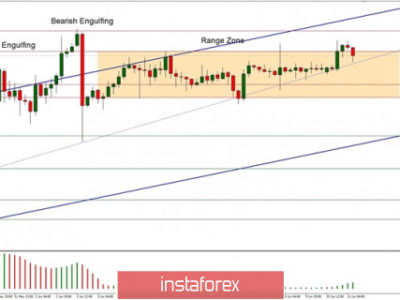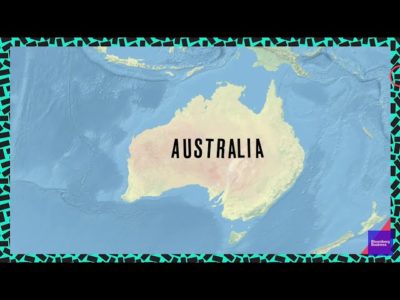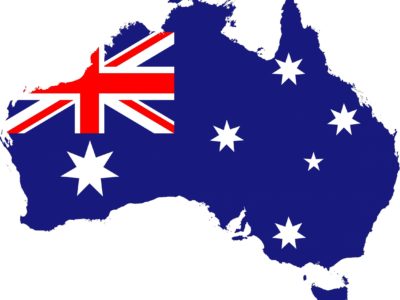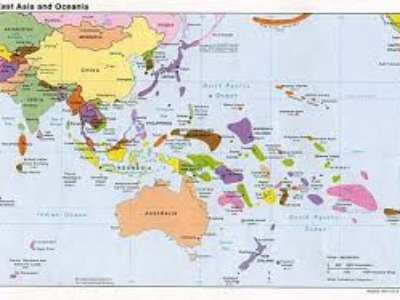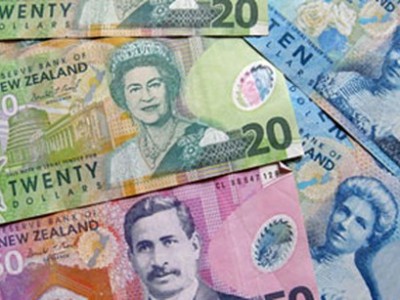Country Profile: Australia
Australia or the “Land Down Under” is the world’s biggest island and is one of the major economies. It is a highly services-oriented economy, with 70% of its GDP coming from industries such as finance, education and tourism.
It is also heavily dependent on its raw material exports, which explains why its economic growth is affected by commodity prices. The country is rich in terms of natural resources, making it a major exporter of agricultural products such as minerals, wheat, wool, and coal.
Australia boasts of having a strong per-capita GDP, outpacing even Germany, the United Kingdom, and France. Even with its large land mass, the Australian population is only at 23.1 million with 2.90 people per square meter and a median age of 38.1 years old. Australia also has a high literacy rate, ranking 36th among 215 nations surveyed with an education index of 0.981.
The Australian economy is widely known for narrowly dodging a technical recession back in 2009 when the rest of the global economy suffered consecutive quarters of negative GDP growth. It was able to chalk up a GDP of $1.525 trillion in 2014 and was ranked the 12th largest economy in the world as of 2012.
Key Economic Indicators
Australia’s economy has been expanding at an average pace of 2.5% for the past few years, well within the global growth norm. Consumer price levels have been fluctuating at around 1.5% to 2.0% annually while its jobless rate currently stands at 5.7%.
Private consumption and retail sales have been steadily making positive contributions to overall economic performance, with the former up by 2.6% in 2015 and the latter up by 2.7%. Industrial production has slowed, as the country has been shifting away from its dependence on the mining sector and onto non-mining activity.
Retail sales for December 2015, however, showed a flat reading instead of the projected 0.5% gain, indicating that consumers would rather save than spend, possibly due to weaker financial confidence and a shaky jobs market.
Trade Activity
Exports have been rising by around 6% each year, although a slowdown is expected for the coming years due to weaker demand from its main trading partner, China. In addition, the tumble in commodity prices, particularly of iron ore, is expected to weigh on its trade revenues.
As of 2014, Australia has exported 33.9% of its products to China, 17.9% to Japan, 7.4% to South Korea, 4.1% to the U.S. and 3.3% to India. In terms of imports, 20.6% of goods come from China, 10.6% from the U.S., 6.8% from Japan, 5.0% from Singapore and 4.7% from Germany.
Australia reported a $3.54 billion trade deficit for December, as exports slumped by 5% while imports declined by 1%, reflecting a drop in both external and domestic demand.
Employment
Among the various economic sectors in Australia, the healthcare and social assistance industry has the largest share of employed individuals with 1,460,281 positions as of February 2015. Retail trade follows second at 1,232,590 employees then construction with 1,021,686 employees.
The Australian Capital Territory, of which Canberra is included, has a state unemployment rate of just 3.7%. Western Australia, which includes the city of Perth, has a 5.0% unemployment figure while Norther Australia, which includes Darwin, has a 5.5% unemployment rate. Tasmania is the state with the highest level of unemployment at 8.3% as of August 2013 data from the Australian Bureau of Statistics.
In the latest employment release from the ABS, hiring fell by 1,000 positions in December, although full-time positions were actually down by 18,500. The unemployment rate held steady at 5.8% for the nation, but this was spurred by a drop in the labor force participation from 65.3% to 65.1%, which suggests that Australians might be giving up on their job hunt.
Current Account Deficit
It’s worth noting that Australia has one of the highest levels of national debt, as its current account deficit has financed government spending in the absence of a strong export-oriented manufacturing industry. The Australian government has taken a macroeconomic reform initiative, forming Free Trade Agreements with several nations to help support the country’s manufacturing industry.
Australia is considered a mixed-market economy and is relatively open with minimal restrictions on imported goods and services. The country plays an active role in the World Trade Organization, G20, APEC, and other trade forums and is also negotiating trade agreements with ASEAN nations and Gulf Cooperation Council countries.
Monetary Policy
The Reserve Bank of Australia (RBA) is the monetary policy authority in Australia. As such, this central bank is in charge of maintaining price stability through the use of tools like interest rates and asset purchases.
The RBA, which is currently headed by Governor Glenn Stevens, has lowered interest rates in a couple of instances last year to boost lending and spending amid a slowdown in global demand. Policymakers have decided to keep monetary conditions accommodative to ensure that the economy is supported even as another slowdown in growth occurs.
In their latest monetary policy announcement, the RBA decided to keep the benchmark rate hold at 2.00%, citing the need to wait for more data to see how the Chinese market slump is affecting the Australian economy. In their official statement, the RBA mentioned that the Australian dollar is already adjusting to lower commodity prices and that employment growth could still gain momentum.
2016 Economic Outlook
The Australian economy appears to have been off to a rough start this year, as the slump in the Chinese stock market early on is bound to weigh on business activity in the Asian giant. Because of that, demand for Australia’s commodity products could be dampened, as Chinese firms adjust to weaker consumption.
The fall in oil and iron ore is also expected to weigh on trade revenues, as well as the country’s inflation numbers. This could lead to slower consumer spending, with Australian’s holding out for lower prices instead of ramping up their purchases.
Slower GDP Growth?
With that, the Australian GDP for the year is likely to slow to around 2.1% this year, with business investment and private consumption expected to stagnate. The shift towards a non-mining driven performance has yet to gain traction, although the economy has drawn support from a pickup in housing demand and household related purchases.
The RBA’s low interest rate environment continues to support lending activity, allowing Australians to take advantage of cheap loans and mortgages. However, the central bank has also been cautioning about a potential market bubble and stands ready to make policy adjustments if necessary.
Unemployment has been on a slow climb, as the transition away from mining investment has resulted to frictional joblessness that has yet to be absorbed. Consumption has grown faster than household incomes in the past few years, although wage growth has shown a bit more momentum in 2015.
Meanwhile, mining activity is poised for more declines in the next few months, as several projects are about to be completed. Analysts project that investment in the mining sector probably declined by 25% last year, which might be followed by another 30% decline in the next couple of years. This might result to more layoffs and weaker wage pressures while non-mining activity struggles to take hold.
More Uncertainties
Business confidence remains feeble, as indicated by the latest industry surveys. Firms are wary about the outlook for China, which affects not just Australia’s export sector, but the economic performance of emerging nations and inflows from other major economies.
Australian companies appear hesitant to expand or increase their business investment, given the downcast outlook for commodity prices and the global economy. Because of that, mining and non-mining growth could be at a standstill for a while.
On a less downbeat note, the Australian dollar’s depreciation is supporting the tourism industry, as foreigners are finding it cheaper to visit the Land Down Under these days. This has led to some support for the services, accommodation, and transportation sectors. In addition, a cheaper local currency has rendered imported goods more expensive, providing a bit of support for price levels.
Export-dependent industries also benefit from currency weakness, as this makes exports cheaper and therefore more affordable. This has helped prop up demand even in the middle of a global slowdown, although revenues remain subdued as prices are low despite stronger volumes.
Even so, there are plenty of uncertainties for the Australian economy and analysts are projecting more central bank action towards the middle of the year if the situation does not improve. The RBA has clarified that they are watching economic developments closely and will not hesitate to act if conditions continue to worsen. Trade and employment figures are expected to dip further, likely dragging the Australian dollar lower as well.
The post Country Profile: Australia appeared first on Forex.Info.
Source:: Country Profile: Australia

